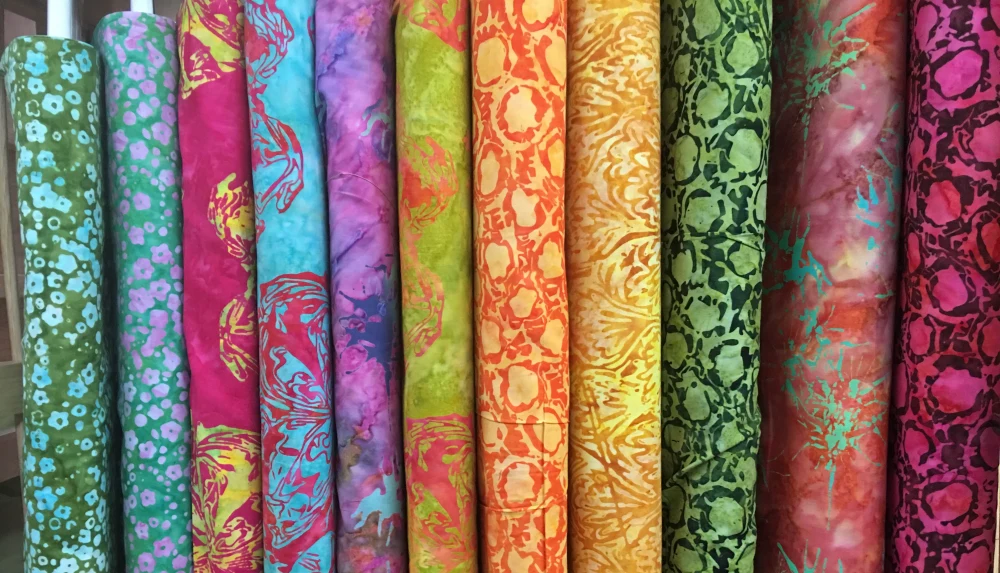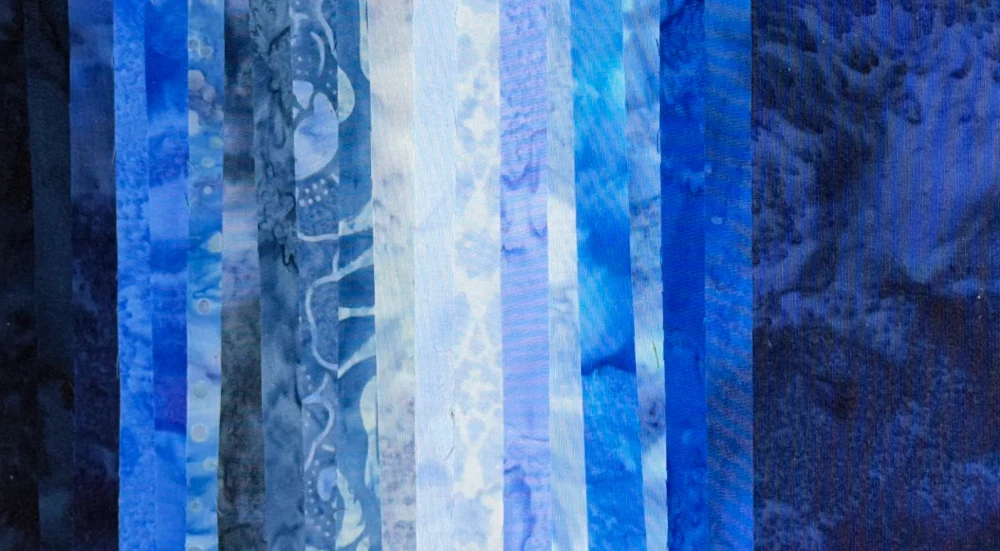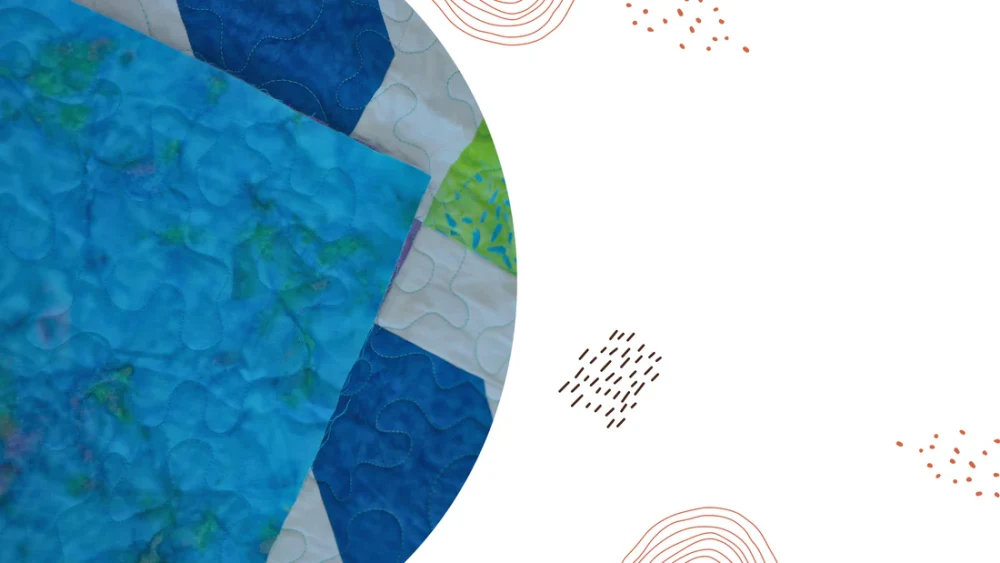Welcome! If you love quilting with batik fabrics or want to try your first batik quilt, you’re in for a treat. Batik fabrics stand out for their vibrant colors, unique patterns, and creative possibilities. You’ll notice some cool differences when working with batik.
Batik uses finer threads and tighter weaves, so your projects feel crisp and dense.
The wax-resist dyeing process yields those beautiful, multi-tonal colors that make any batik quilt truly stand out.
Batiks don’t stretch much and usually appear two-sided, which lets you get creative with your layouts.
Quilting with batik fabrics lets you explore bold ideas. Dive in, feel inspired, and get ready to make your next batik quilt shine!
Key Takeaways
Batik fabrics have a tight weave and vibrant colors that make quilts look crisp and unique.
Always prewash batik fabrics to prevent color bleeding and control shrinkage before sewing.
Use sharp needles and strong thread to sew batik fabrics smoothly and avoid skipped stitches.
Mix batik with other fabrics carefully by prewashing all materials to keep colors bright and avoid uneven shrinking.
Precut batik fabric packs save time and help you design beautiful quilts with coordinated colors and patterns.
Batik Fabrics Basics

Understanding Batik
Batik is more than just a fabric—it’s an art form with deep roots in culture and tradition. When you pick up batik fabrics, you hold a piece of history. The process starts with artisans applying hot wax to cotton using special tools like tjanting needles.
This wax creates beautiful, intricate designs. After the wax goes on, the fabric gets dipped in dye. Sometimes, artists repeat this step with different colors and more wax, building up layers and adding effects like crackling. Once the dyeing is done, they remove the wax, revealing patterns that are always unique.
Batik fabrics come from many places, but Indonesia, especially Java, stands out as the heart of batik tradition. The word “batik” itself comes from the Javanese language. In Java, batik has a long history and is tied to royalty and important ceremonies.
You’ll also find batik in Malaysia, Nigeria, Ghana, India, and Thailand, each with its twist on the style. Indonesian batik is famous for its detailed patterns and rich symbolism, while African batik often uses bold colors and larger motifs.
What makes batik fabrics special for quilting? The wax-resist process gives them a tight weave, vibrant colors, and a design that usually shows on both sides. This means you can use either side in your batik quilt, giving you more creative options. The fabric feels crisp and strong, which helps your quilt blocks hold their shape.
Tip: Batik fabrics are less likely to fray, so you can cut and sew with confidence. Just remember, the tight weave means you’ll want to use sharp needles and strong thread for your batik quilt.
Prewashing Tips
Prewashing batik fabrics is a smart move before you start your next batik quilt. The dyeing process leaves extra dye in the fabric, which can bleed during the first few washes. You don’t want those beautiful colors to run and spoil your quilt.
Here’s how you can prewash batik fabrics safely:
Wash the fabric several times in cool or lukewarm water with a gentle detergent. Keep rinsing until the water runs clear.
Use a detergent like Synthrapol to help remove excess dye.
Try color catchers in the wash to trap loose dyes and prevent color transfer.
For a quick test, wet a small piece of fabric, sandwich it between paper towels, and press down. If you see color on the towels, keep washing.
Reds and blues in batik fabrics tend to bleed more, so pay extra attention to those.
After washing, air-dry your fabric on a towel or clothesline.
Prewashing also helps control shrinkage. Batik fabrics go through a lot during the wax-resist process, but they can still shrink a bit—usually less than regular quilting cotton. Using a color fixative like Retayne can help lock in the dye and keep your colors bright.
Always prewash all your fabrics if you plan to mix batik with other cottons in your batik quilt. This way, you avoid uneven shrinking and keep your quilt looking sharp.
Note: Some quilters skip prewashing and rely only on color catchers, but most agree that prewashing is the safest way to protect your batik quilt from color bleeding and shrinkage.
Fabric Stiffness
You’ll notice that batik fabrics feel stiffer and heavier than regular quilting cotton. This comes from the tight weave and the wax-resist dyeing process. The stiffness can make the fabric a bit harder to press and more likely to wrinkle. Don’t worry—there are ways to handle this.
Use plenty of steam when pressing batik fabrics. The steam helps relax the fibers and smooth out wrinkles.
The stiffness usually softens after a few washes and with use, but it never goes away completely.
Because of the dense weave, always use sharp, fine needles when sewing your batik quilt. This makes stitching easier and prevents skipped stitches.
Batiks fray less than other fabrics, which is great for appliqué. However, the tight weave can make needle-turn appliqué a bit tricky, so take your time.
If you want to soften your batik fabrics before sewing, soak them in hot water with a color fixative, rinse in cold water, and hang to dry. Avoid fabric softeners, as they can leave residue on your fabric and tools.
Tip: After pressing, your batik fabrics will feel crisp and ready to sew. This crispness helps your quilt blocks stay accurate and flat.
Working with batik fabrics might feel different at first, but once you get the hang of it, you’ll love the results. The unique texture, vibrant colors, and lasting durability make every batik quilt a true work of art.
Choosing Batik Fabrics

Selecting Quality Batik
When you start a batik quilt, picking the right batik quilting fabric makes a big difference. You want fabric that feels smooth but not too stiff or limp. High-quality batik fabrics have a tight weave, often with a thread count between 200 and 220 threads per inch.
This tight weave helps your batik quilt blocks hold their shape and makes appliqué work easier. Look for batik fabric designs with sharp, clear patterns and rich colors. If you see blurry edges or faded spots, the fabric might not last as long.
Always check for colorfastness, especially with darker shades like reds and purples. Test a small piece in water to see if the color bleeds. Fanda Fabrics is a trusted source for high-quality batik fabrics and offers customization options, so you can find exactly what you need for your next batik quilt.
Their Batik Patchwork Fabric stands out for its vibrant colors and durability, making it a favorite for both beginners and experienced quilters.
Color Coordination
Color plays a huge role in every batik quilt. Batik quilting fabric comes in so many shades and patterns, so you have endless choices. Try using analogous colors for a calm, harmonious look, or go bold with complementary colors for contrast.
Mixing light, medium, and dark batiks adds depth and keeps your quilt from looking flat. You can also balance bright, saturated batik fabrics with some muted tones or neutrals to give the eye a place to rest.
Many quilters follow color trends from fashion and home decor, but trust your instincts and pick what feels right to you. When you lay out your batik quilt, spread the colors evenly to create balance and movement. The unique flow of batik fabric designs can help guide the viewer’s eye across your quilt.
Tip: Lay out your batik fabrics before sewing to see how the colors interact. Move pieces around until you find a combination that excites you!
Mixing with Other Fabrics
You might wonder if you can mix batik fabrics with other quilting cottons. The answer is yes, but you need to plan. Batiks have a tighter weave and a stiffer feel than regular cotton, so they behave a bit differently. Always prewash all your fabrics separately to prevent color bleeding and shrinkage.
When you combine batik with other fabrics, you get interesting textures and visual contrast in your batik quilt. Batiks pair well with solids, prints, and even linens. Just remember, the difference in weight and stiffness may mean you need to adjust your sewing technique.
Fanda Fabrics’ Batik Patchwork Fabric blends beautifully with other materials, giving your batik quilt a unique, artistic edge.
Aspect | Advantages | Challenges |
|---|---|---|
Fabric Compatibility | Batiks pair well with many fabrics, adding contrast and interest. | Batiks may bleed color, so prewashing is key. |
Texture & Appearance | Batiks add organic texture and vibrant shades to your quilt. | A stiffer hand may affect handling. |
Sewing & Handling | Tight weave is great for appliqué and paper piecing. | Adjust sewing for different fabric weights. |
Cutting and Sewing with Batik Fabric

Quilting with batik fabrics brings a unique experience to your sewing table. The tight weave, vibrant colors, and crisp texture of batik make every batik quilt stand out. Let’s dive into some practical tips for cutting and sewing with batik fabric so you can get the best results every time.
Accurate Cutting
Getting clean, accurate cuts is key when you work with batik. The dense weave of batik fabric helps reduce fraying, which is great for intricate piecing in your batik quilt. Still, you want to handle the fabric with care to keep your cuts sharp and your pieces precise.
Use a sharp rotary cutter and a clean cutting mat for the best results.
Fine pins and needles work best because batik’s tight weave can show holes if you use thicker pins.
Avoid seam ripping whenever possible. The dense weave of batik can hold onto needle holes, making them more visible if you need to undo stitches.
Batik fabric feels a bit stiffer than regular quilting cotton, so take your time when lining up your ruler and making cuts.
Try not to stack too many layers of batik at once. The fabric’s density can make it harder to cut through several layers cleanly.
Tip: If you want to skip the hassle of cutting, Fanda Fabrics’ Batik Fabric Charm Packs offer pre-cut 5-inch squares in a range of vibrant patterns. These packs save time and help you jump right into piecing your next batik quilt.
Needle and Thread Choices
Choosing the right needle and thread makes sewing with batik fabric much smoother. Batik’s tight weave can dull needles quickly and sometimes cause skipped stitches if you use the wrong size.
Here’s a quick guide to help you pick the best tools for your batik quilt:
Needle Type | Recommended Sizes | Features | Recommended Thread Weight | Use Case |
|---|---|---|---|---|
Universal Needle | 70/10, 75/11, 80/12 | Smaller, sharper needles for piecing and quilting batiks | 50 wt cotton/polyester | Piecing (70/10 or 75/11), quilting (80/12) |
Microtex Needle | N/A | Ultra-sharp, slim point for precision | N/A | Precision piecing, dense batik fabrics |
Topstitch Needle | N/A | Large eye for heavier threads | 12–30 wt specialty threads | Decorative stitching, heavy/metallic threads |
If you notice skipped stitches, try a smaller needle size.
Change your needle often. Batik’s density can dull needles faster than regular cotton.
For piecing, 50 or 60-weight cotton or polyester thread works well. If you’re doing appliqué, fine monofilament thread gives a clean finish.
Test your needle and thread combo on a scrap of batik before starting your batik quilt blocks.
Adjust your sewing machine’s tension settings if you see uneven stitches. Batik’s tight weave can sometimes pull the thread differently than other fabrics.
Tip: Some quilters like to use ballpoint or stretch needles for batik, as these can help prevent skipped stitches. Always experiment on a scrap first to see what works best for your project.
Managing Fraying
One of the best things about quilting with batik fabrics is their natural resistance to fraying. The wax-resist dyeing process and tight weave make batik less likely to unravel than standard quilting cottons. Still, you might see some fraying, especially along bias edges or after prewashing.
Here are some tips for sewing with batiks and keeping fraying under control:
Trim raw edges with pinking shears before washing to reduce loose threads.
Use a zigzag stitch or serger along the edges if you plan to handle the fabric a lot before sewing.
For bias edges, staystitch about 1/4 inch from the edge to keep the fabric stable.
Avoid wringing or shaking wet batik fabric after washing. Gently press out water and air-dry flat or on a line.
Store your batik quilt pieces neatly folded to prevent rubbing and snagging at the edges.
If you want extra protection, apply a small amount of fabric glue like Fray Check to the edges, but use it sparingly to avoid stiffness.
Note: Batik’s superior fray resistance makes it perfect for raw edge appliqué and paper piecing. You can confidently use batik in your batik quilt without worrying about the fabric falling apart.
Fanda Fabrics’ Batik Fabric Charm Packs are especially handy here. Since the squares are pre-cut, you don’t have to worry about fraying from repeated handling. Just open the pack and start piecing your batik quilt right away.
Quilting with batik fabrics can feel different at first, but once you get used to the tight weave and crisp texture, you’ll love how your batik quilt turns out. With the right tools and a few simple tricks, you’ll find that sewing with batik fabric is both fun and rewarding.
Batik Quilt Design and Finishing
Using Precuts
If you want to design a spectacular batik quilt, precut batik fabric packs make the process much easier. Fanda Fabrics’ Batik Fabric Charm Packs give you a full, coordinated collection of batik in one package. You get a variety of colors and patterns that work together, so you can start piecing right away.
No need to spend hours cutting or matching fabrics. These packs save time, reduce waste, and help you focus on how to design a spectacular batik quilt that stands out. You can lay out the squares, move them around, and experiment with different arrangements.
Precuts also help you avoid cutting mistakes, which means your batik quilt blocks fit together perfectly. Many quilters finish a batik quilt in a day using only precuts. If you want to create a gift or just enjoy a quick project, these packs are a great choice for creating a spectacular batik quilt.
Access to a full, coordinated batik collection
Saves time and money
Inspires creativity and experimentation
Makes it easy to design a spectacular batik quilt
Decorative Stitching
Decorative stitching brings out the beauty of batik. When you design a spectacular batik quilt, try adding topstitching with a contrasting thread. This highlights the edges and makes the batik patterns pop. You can use a 3.0 mm stitch length and a topstitching foot for clean, even lines.
Flat-felled seams or overlocking also give your batik quilt a neat finish. For hems, double-fold a 1/4-inch edge and stitch with a single or double needle. These simple techniques help you show off the unique texture of batik and add a personal touch to your batik quilt.
Use flat-felled seams for clean edges.
Try topstitching close to the edge with a bold thread.
Double-fold hems for a tidy finish.
Binding and Care
Finishing your batik quilt with strong, neat binding keeps it looking beautiful for years. Double-fold binding works best for batik. Sew it to the back, wrap it to the front, and secure it with a small zigzag stitch. Press the binding, but don’t iron back and forth—just lift and place the iron to avoid stretching the batik.
For extra help, use clips to hold the binding in place. When you wash your batik quilts, use cold water and a gentle detergent. Add color catchers to prevent dye bleeding. Air dry flat and keep your batik quilt out of direct sunlight.
Store your batik quilt in a cool, dry place, and refold it now and then to avoid creases. These steps help you maintain the color and texture, so your batik quilt stays as stunning as the day you finished creating a spectacular batik quilt.
Conclusion
You now have 12 essential tips to help you create a batik quilt that stands out and lasts. When you follow these steps, you avoid common batik mistakes like dye bleeding and tension issues. Prewashing batik, using the right tension, and choosing quality batik fabric all make a difference.
Fanda Fabrics’ batik charm packs and patchwork batik give you vibrant color and soft texture, making every batik project fun. Many quilters love the variety and quality of batik from Fanda Fabrics. Try a new batik design, share your batik experiences, or ask questions below. Your next batik quilt could inspire others!
FAQ
What makes batik fabric different from regular quilting cotton?
You’ll notice batik feels denser and crisper than regular cotton. The wax-resist dyeing process gives batik its tight weave and vibrant colors. This makes your quilt blocks hold their shape and helps your finished project stand out.
Can you mix batik with other fabrics in a quilt?
Yes, you can mix batik with other quilting cottons. Just remember to prewash everything first. Batik’s tight weave and unique texture add contrast and interest to your quilt, so you get a more dynamic look.
How do you prevent batik colors from bleeding?
Always prewash batik before you start sewing. Use cool water and a gentle detergent. Color catchers help trap loose dye. If you see a lot of color in the wash, keep rinsing until the water runs clear. This keeps your quilt looking bright.
Is there a right or wrong side to batik fabric?
Batik usually looks the same on both sides. Sometimes, one side appears a bit brighter. You can use either side in your quilt. This gives you more creative options when you lay out your batik pieces.
Why is batik fabric more expensive?
Batik costs more because artisans hand-dye each piece using a wax-resist method. This process takes time and skill. The result is a unique, high-quality fabric that brings rich color and artistry to your quilt projects.
